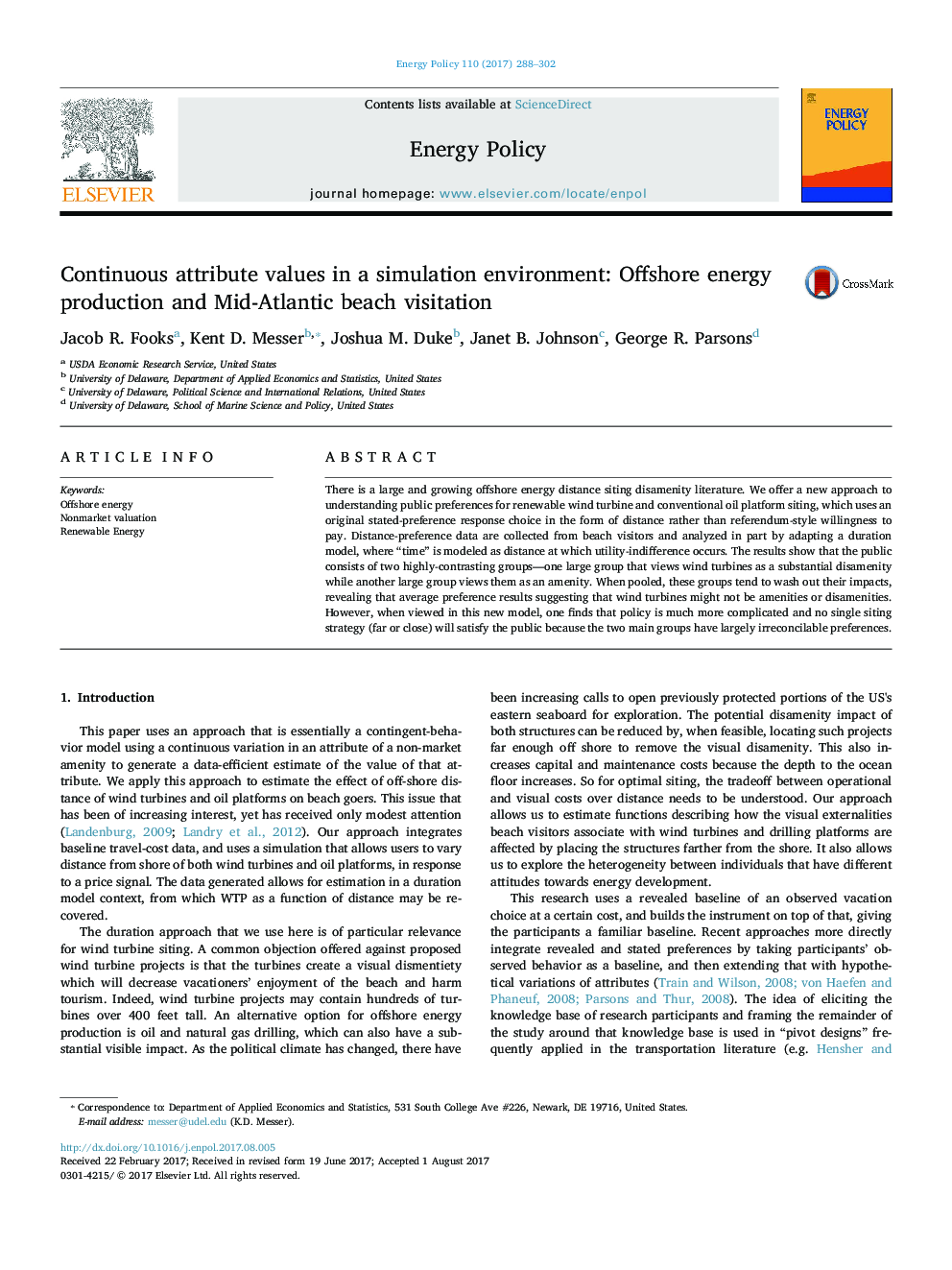| Article ID | Journal | Published Year | Pages | File Type |
|---|---|---|---|---|
| 5105559 | Energy Policy | 2017 | 15 Pages |
Abstract
There is a large and growing offshore energy distance siting disamenity literature. We offer a new approach to understanding public preferences for renewable wind turbine and conventional oil platform siting, which uses an original stated-preference response choice in the form of distance rather than referendum-style willingness to pay. Distance-preference data are collected from beach visitors and analyzed in part by adapting a duration model, where “time” is modeled as distance at which utility-indifference occurs. The results show that the public consists of two highly-contrasting groups-one large group that views wind turbines as a substantial disamenity while another large group views them as an amenity. When pooled, these groups tend to wash out their impacts, revealing that average preference results suggesting that wind turbines might not be amenities or disamenities. However, when viewed in this new model, one finds that policy is much more complicated and no single siting strategy (far or close) will satisfy the public because the two main groups have largely irreconcilable preferences.
Related Topics
Physical Sciences and Engineering
Energy
Energy Engineering and Power Technology
Authors
Jacob R. Fooks, Kent D. Messer, Joshua M. Duke, Janet B. Johnson, George R. Parsons,
